Shallot: [Growing, Irrigation, Substrate, Harvest and Much more]
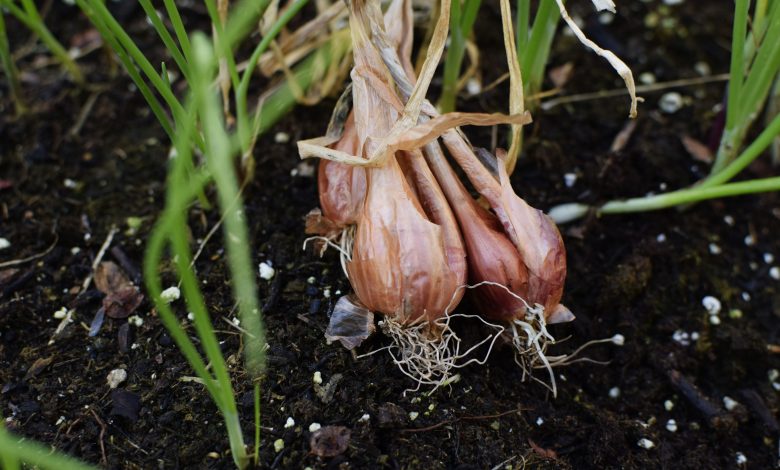
Shallots are a member of the Allium genus, which includes onions, garlic, chives, and various ornamental plants.
The term «shallot» refers to a particular group of plants from a subgroup of onions, known as «multiplier onions,» that produce two or more bulbs per plant.
Although shallots were previously considered a separate species (Allium ascalonicum), they are now botanically classified as a variety of onion (Allium cepa var. aggregatum).
Shallots multiply in the ground like garlic, but the individual bulbs have concentric layers like onions. Also, shallots are usually smaller than garlic bulbs and have a mild onion flavor.
They are relatively easy to grow. Like garlic cloves, they should be planted in the fall or early spring, and with their rapid growth rate they are usually ready for harvest in 90 days on average.
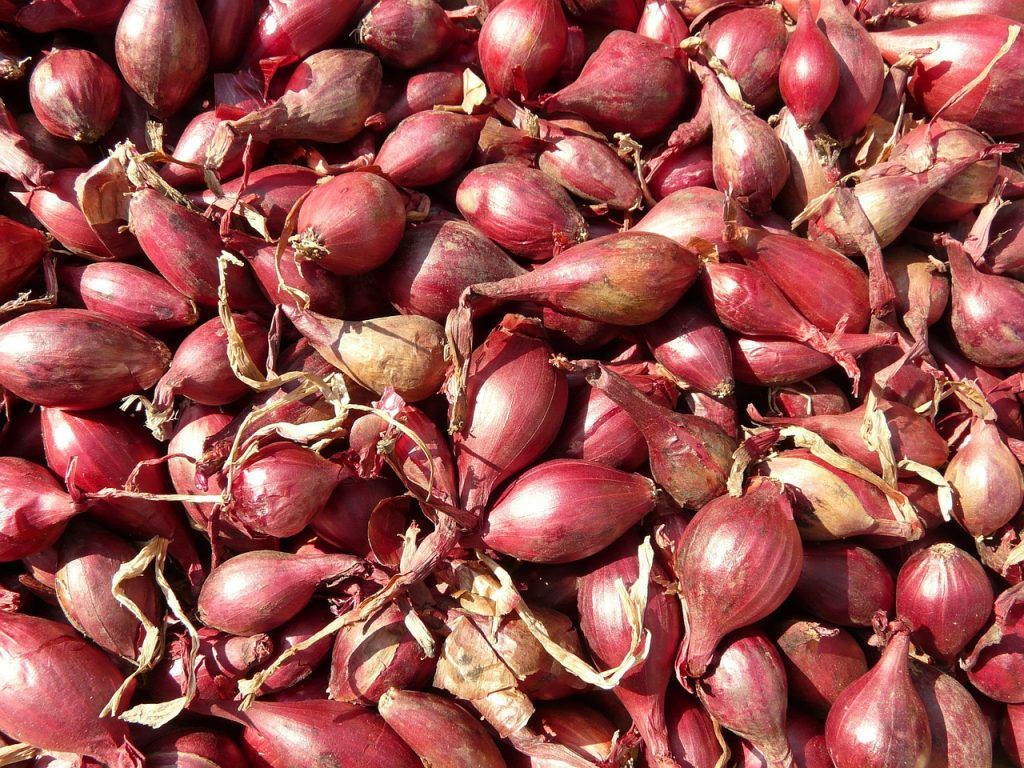
It is cautioned that all parts of Allium cepa species and varieties are toxic to domestic animals.
Important points when sowing shallot
- When? In late fall, but also in early spring. Very important if the area where you are going to plant, the winters are cold.
- Where? They need a lot of light. So a sunny area.
- How do we prepare the land? We want the pH of the soil to be neutral to acidic (between 5 and 7). It is not necessary to pay.
- How do we water? Shallots need continuous watering throughout the growing season. Make sure the soil is slightly moist, however don’t let the bulbs sit in soggy soil as this can cause them to rot.
- What do we plant nearby? Carrots, to avoid other pests and diseases.
- What don’t we plant nearby? Other similar species, such as onions or garlic, since they will compete for nutrients and water.
- What pests and diseases does it have? See below for more detail.
What is shallot?
The shallot is a botanical variety of the onion. Until 2010, shallot was classified as a separate species, Allium ascalonicum, a name that is synonymous with Allium cepa, the species name for onion. A. cepa is the correct name for the shallot species.
Its close relatives are garlic, spring onion, leek, chives, and Chinese onion.
The shallot probably originated in central or southwestern Asia, from where it traveled to India and the eastern Mediterranean.
Shallot Characteristics
- Common name: Shallot, French shallot, gray shallot.
- Botanical name: Allium cepa var. aggregatum (formerly Allium ascalonicum).
- Family: Amaryllidaceae.
- Plant type: Biennial, bulb.
- Size: 30 to 60 centimeters high, 180 to 360 centimeters wide.
- Sun exposure: Full sun, partial sun.
- Soil Type: Clay, well drained.
- Soil pH: Neutral to acidic (5.0 to 7.0).
- Flowering time: Spring.
- Native area: Unknown; probably Southwest Asia.
- Toxicity Toxic: to domestic animals.
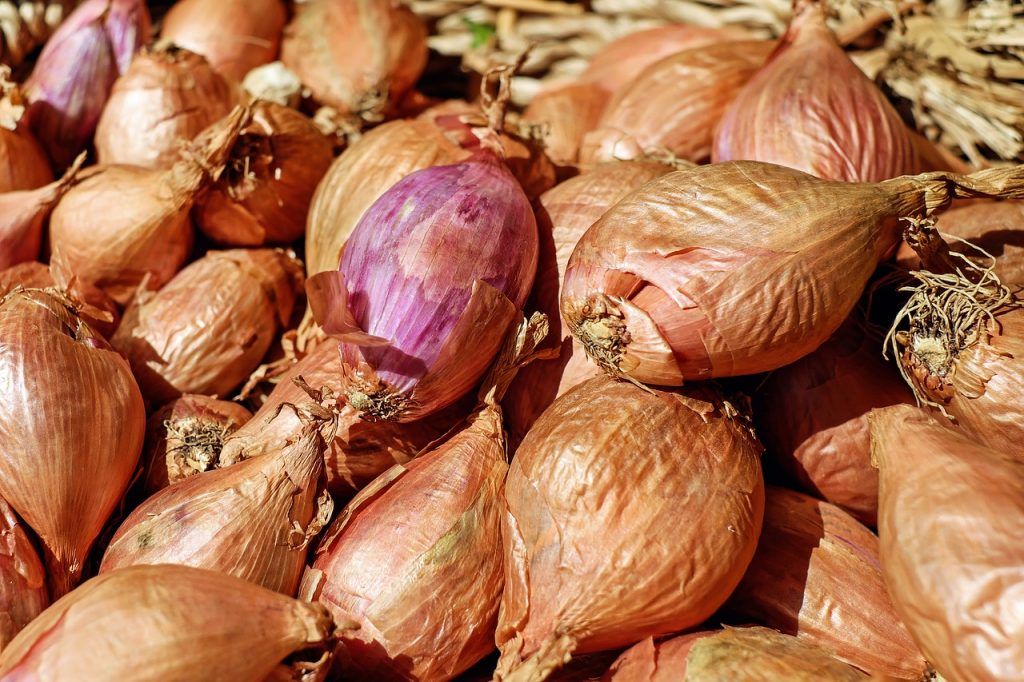
Like garlic, shallots form in clusters of shoots with a head made up of multiple cloves. The skin color of shallots can range from golden brown to gray or pinkish red, and their whitish flesh is often tinged with green or magenta.
Shallots are grown extensively for culinary uses, and are propagated by cuttings. In some regions («long-season areas»), seedlings are usually planted in the fall (September or October in the northern hemisphere).
In other regions, the suggested planting time for the main crop is early spring (typically February or early March in the northern hemisphere).
When planting, the tops of the bulbs should be kept a little above the ground, and the surrounding soil is usually removed when the roots have established themselves. They reach maturity in summer, although fresh shallots can now be found year-round in supermarkets.
Shallots should not be planted on newly fertilized land. Shallots are damaged by leek moth larvae, which mine the leaves or bulbs of the plant.
Are shallots easy to grow?
Shallots are relatively easy to grow as long as a suitable planting location is available, with sufficient sun and good drainage.
How long does it take to grow shallots?
Shallots should be ready to harvest approximately 90 days after planting.
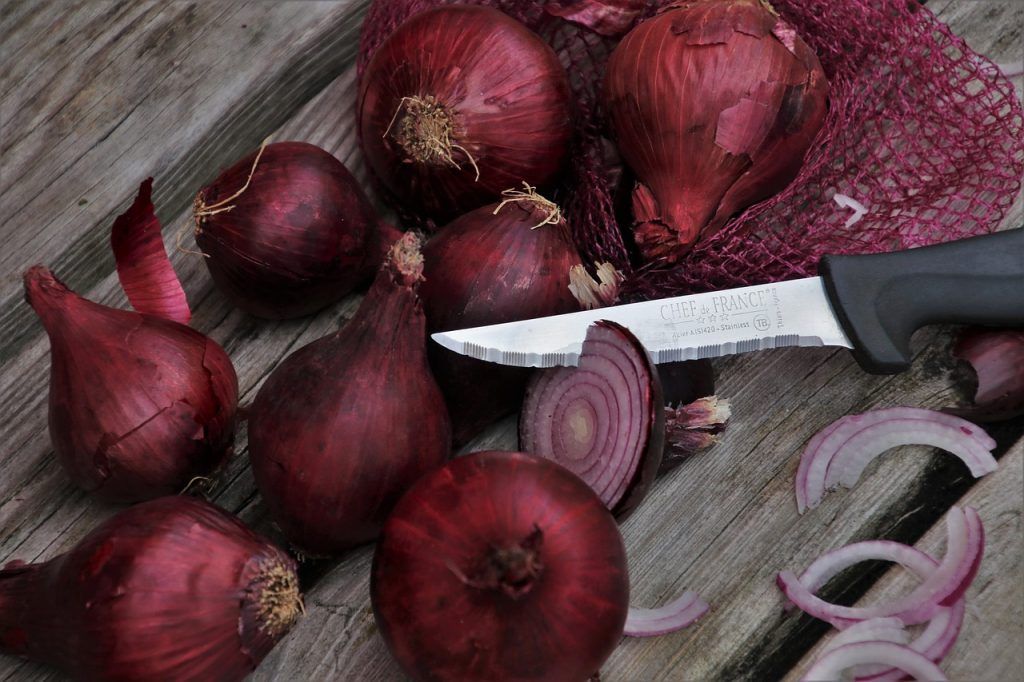
How many shallots grow from a single bulb?
A single bulb can produce between 4 and 12 new bulbs when planted.
When do we grow the shallot?
If you plant shallots in late fall, you will be able to harvest them in early summer. However, fall plantings don’t always work in cooler areas.
You can also plant them in early spring for harvest in late summer. Plant shallots six to eight weeks before the last expected frost date in your area in the spring.
Selection of the place to plant
Choose a sunny spot in your vegetable garden or garden for your shallots. It’s also ideal if you have some space from other plants, as shallots don’t like to compete for soil moisture or nutrients.
Also, the growing site should have good soil drainage and not be prone to flooding. Shallots can also be grown in containers.
Spacing, depth and support
Shallots are usually grown from cloves. Place each clove in the ground with the thick end pointing down and the top just above the ground line.
Plant them about 6 inches apart in rows, and space each row about 12 inches apart. These plants do not need a support structure to grow.
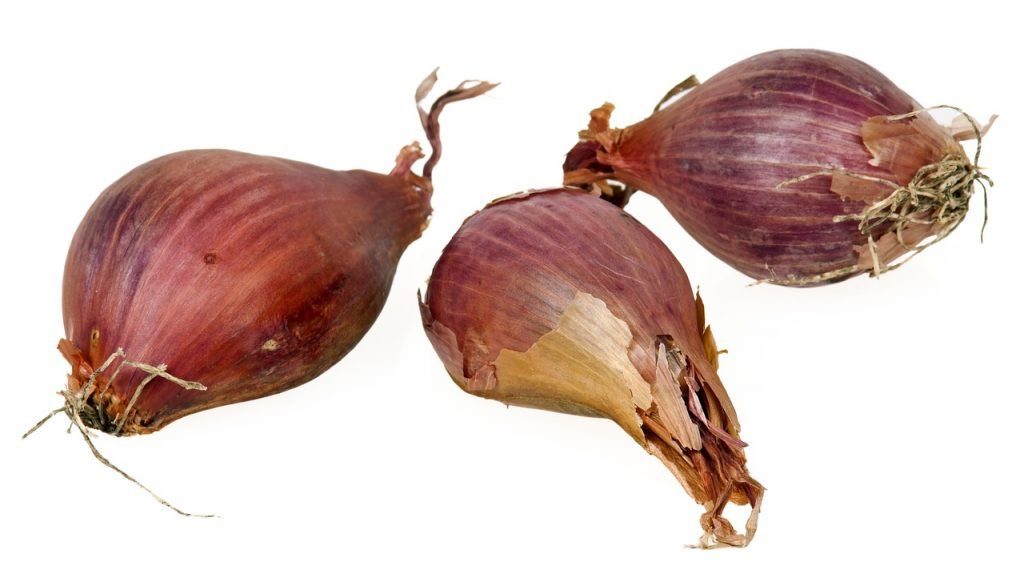
Shallot care
light needs
For best results, grow your shallots in full sun, meaning at least six hours of direct sunlight most days. Shallots can also tolerate some shade, but they won’t be as hardy.
How to prepare the soil
Plant shallots in well-draining soil enriched with organic matter. They like a soil pH between acidic and neutral, between 5 and 7.
Water: How and how often do we water?
Shallots need continuous watering throughout the growing season.
Make sure the soil is slightly moist, however don’t let the bulbs sit in soggy soil as this can cause them to rot.
temperature and humidity
Cloves require a cool dormancy period of at least one month with temperatures between 0 and 10°C before they start to grow. Shallot plants prefer soil temperatures between 1-32°C.
Also, as long as they are watered regularly and kept in well-draining soil, shallots are not sensitive to moisture.
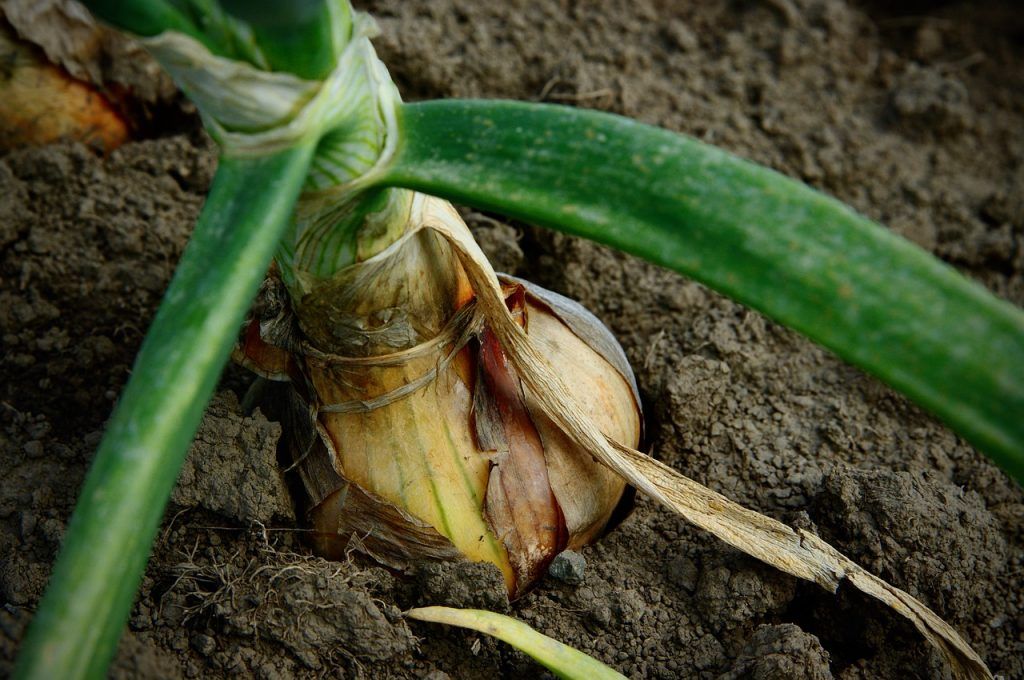
Fertilizer and compost
Normally, shallots do not need fertilizers or fertilizers. However, amending the soil with compost in the spring can help add nutrients and improve drainage.
types of shallots
Shallots sold for garden planting are generally divided into traditional heirloom varieties and hybrids bred for larger size or longer storage longevity. Some types of shallots are:
- ‘French’: A traditional variety considered by most to be the only true shallot and preferred for gourmet cooking.
- French Red: An heirloom variety that has a pungent flavor and is easy to peel.
- ‘Frog Leg’: An heirloom variety that is very mild; the bulbs are elongated like a frog’s leg.
- ‘Ambition’: A large hybrid French shallot that stores very well.
- ‘Conservative’: A hybrid similar to ‘Ambition’ but larger and rounder.
shallots and chives
As they are both part of the Allium genus, shallots and chives are often confused.
However, the way they are used is very different.
Chives, also known as green onions, are harvested when the bulbs are immature and are used for their long, thin green leaves.
Shallots are used for their small yet fully mature bulbs, which have a much stronger flavor than chives.
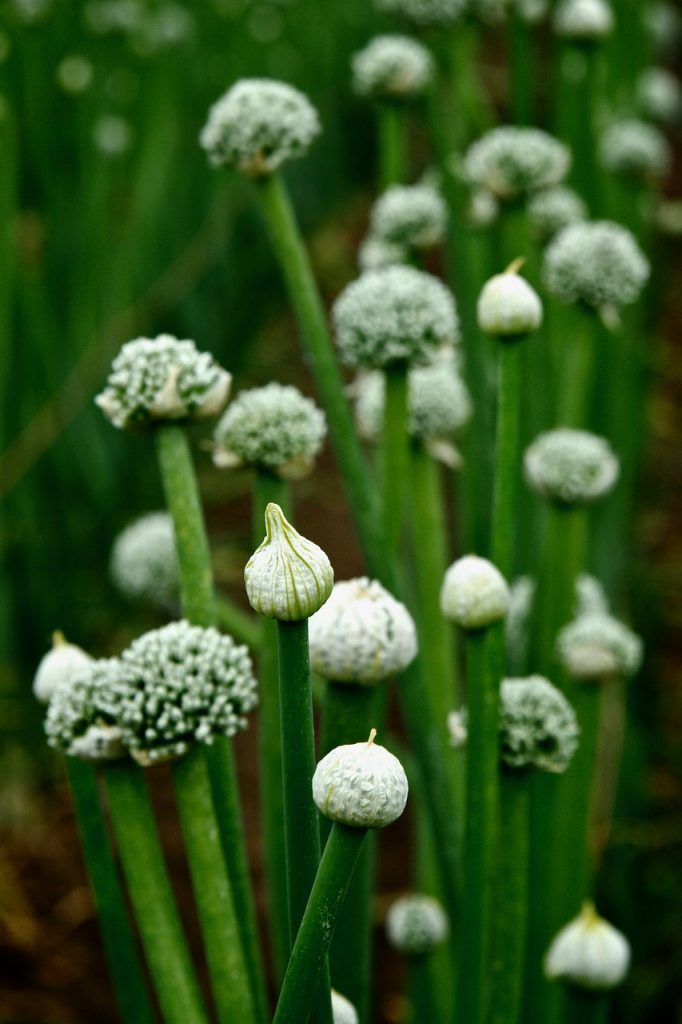
The shallot harvest
Shallots are usually ready to harvest approximately 90 days after planting. Like onions, shallots indicate they are ready to be harvested when their leaves turn brown and shrivel.
Dig up the entire plant and shake off excess soil. Then place it in a dry, shady place for a couple of weeks to cure. Then remove the roots and the top.
You can store shallots in a cool, dry room at 2-7°C for up to eight months. Put them in a mesh bag and make sure they have good air circulation.
Shallots have a mild onion and garlic flavor and can be used in any recipe that calls for onions, especially if a milder flavor is desired. They are very good raw or cooked.
Propagate and reproduce shallot cuttings
Most shallots are harvested in their first growing season, before they flower and set seed, so the only way to propagate them is from the bulbs.
Since each bulb planted usually gives rise to several new bulbs, it is rarely necessary to buy more shallots once a plot has been established. Here’s how to propagate with bulbs:
- When harvesting shallots, save some of the healthiest bulbs to replant the following fall or spring.
- When it’s time to plant, choose a sunny spot and dig a hole about the size of a bulb.
- Mix some compost into the soil.
- Plant the bulb with the pointed end just above the soil line.
- Water to keep the soil slightly moist. Green shoots should appear within a week.
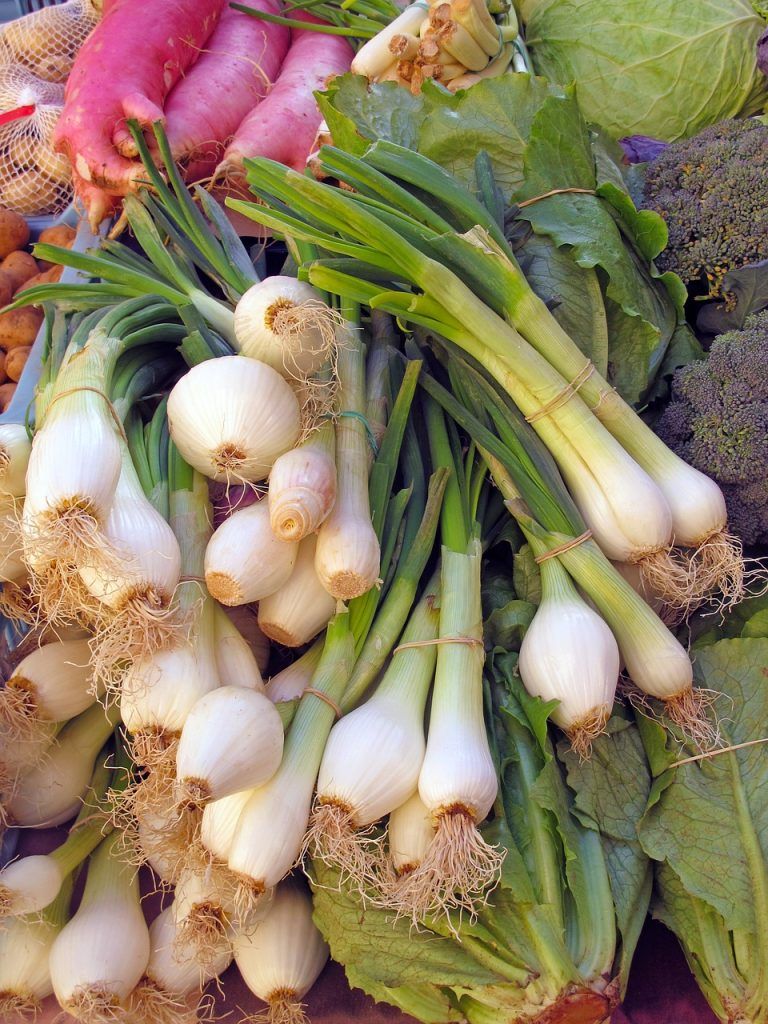
How to grow shallots from seed
- To grow shallots from seed, plant them about eight weeks before the last expected frost date in your area for spring.
- Use a shallow tray with starter mix, and plant the seeds only half an inch deep.
- Place the tray in a bright spot and you should see germination in a week or so.
- Once all danger of frost has passed, the seedlings can be planted in the garden 6 inches apart.
Common Pests and Diseases of Shallots
Shallots are subject to many of the same problems as onions.
neck rot
Diseases to watch out for are white rot and neck rot. White rot is a fungal disease that attacks the roots and base of the bulb.
It can persist in the soil, so shallots should not be grown in the same spot for five to eight years once white rot occurs.
Remove affected plants.
Collar rot is a soil-borne fungal disease that attacks the collar and leaves of the plant. Discard the plants and do not replant them in the same area for two years.
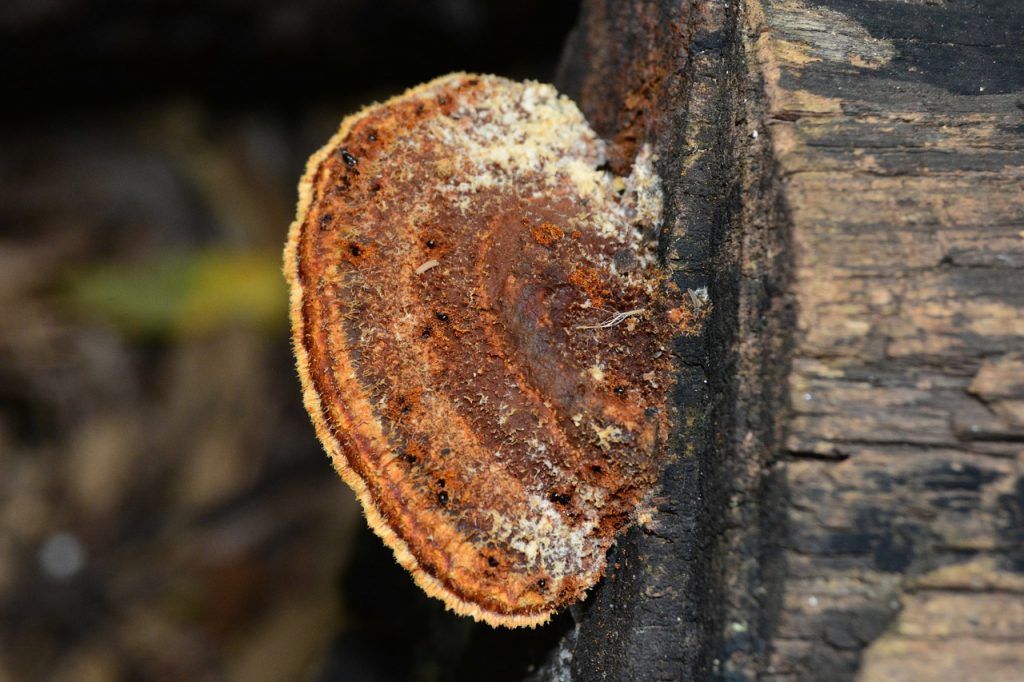
rose root
If you notice that your plants seem stunted or that your seedlings are turning brown, pull up a plant and check the roots for traces of pink.
This is the most visible symptom of pink root, a disease caused by the fungus Phoma terrestris.
Overly wet and waterlogged soil provides the perfect environment for this fungus to thrive, so be sure to avoid overwatering and plant in soil that drains well.
In very wet conditions, you may consider covering your shallots with a row cover to prevent over-saturation if a period of heavy rain is anticipated.
If the pink root takes hold, it is incurable. Remove infected plants.
This can help save surrounding plants from becoming infected and remove the fungus from the soil for future plantings.
purple stain
Have you seen small, oval, pale brown lesions on the leaves? Or have they already evolved into large purple -brown spots?
If this is the case, your plant may be infected with purple spot, caused by the fungus Alternaria porri.
Although this disease does not necessarily make the bulbs inedible, it can kill all the foliage, causing the plant to stop growing.
The best way to prevent purple spot is to avoid watering the foliage, water only at ground level (drip irrigation), and spray the leaves with a copper-based fungicide at the time signs of infection are observed.
white rot
If the leaves begin to yellow prematurely and the plant stops growing, take a closer look at the bulb area.
Do you see fuzzy white mold at the base of the plant?
If so, your Allium may be suffering from white rot, caused by the fungus Sclerotium cepivorum. This disease can destroy your entire crop and can stay in the ground for up to 20 years.
If you have an outbreak of white rot, don’t plant any Allium crops there for a long time.
Alternatively, you can remove the infected soil and dispose of it somewhere where it can’t infect anything anymore.
Onion fly larvae and various rodents
Pests that haunt shallots are onion fly larvae and rodents.
The larvae of the worms hatch from the eggs of the flies that burrow in the bulbs. Planting carrots nearby can deter them.
Also, rodents, such as squirrels and rabbits, often dig up shallots to feed on the bulbs. There are several techniques to avoid this, such as the use of fences, which are usually the most effective way to keep rodents out of the garden.
onion thrips
Onion thrips (Thrips tabaci) look like small grains of rice. They appear on the leaves and eat everything, weakening the plant, but they do not usually bother the growing bulb.
To kill thrips, you can spray the leaves with insecticidal soap or neem oil according to the package directions.
onion worms
Onion hornworms (Delia antiqua), on the other hand, are terrible news for bulbs and root systems. They gnaw at the bulbs and damage is often not noticed until later, when the leaves are stunted and turn brown.
If you see small white worms on the soil surface, or thin brown flies fluttering around your crops, remove the infected plants.
History and etymology
The name «shallot» comes from Ashkelon, an ancient Canaanite city, where classical Greeks believed shallots originated.
The term shallot is usually applied to the French red shallot (Allium cepa var. aggregatum, or the A. cepa Aggregatum group).
It is also used for the Persian or musir shallot (Allium stipitatum) from the Zagros Mountains in Iran and Iraq, and the French gray shallot (Allium oschaninii) which is also known as griselle or «true shallot»; It grows wild from central to southwestern Asia.
The name shallot is also used for a spring onion in New South Wales, Australia and among English-speakers in Quebec, while the French term shallot refers to the plant referred to on this page.
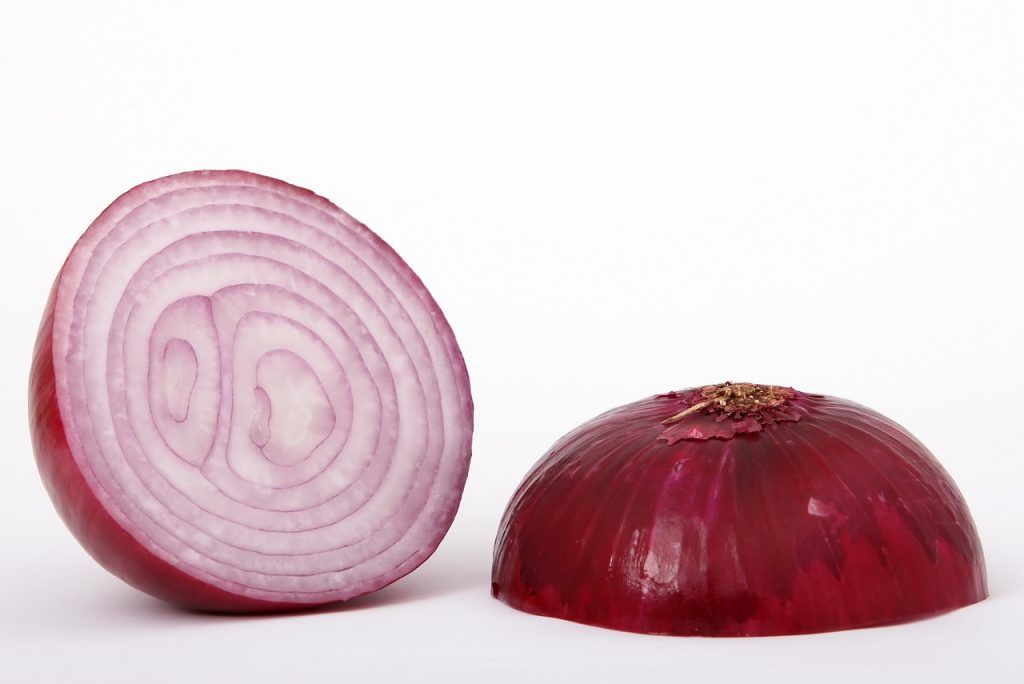
The term eschalot, derived from the French word échalote, can also be used to refer to the shallot.
The A. strain var. aggregatum also probably comes from central Asia, but does not seem to grow wild anywhere today.
From Asia, both types of shallot found their way to India and then to Europe. The word «eschalot» first appeared in the Oxford English Dictionary in 1707.
Ancient Greeks who enjoyed the bulb apparently thought it originated from the ancient Canaanite city of Ashkelon, which is still a modern-day city in present-day Israel.
Other spellings of Ashkelon are «Ashqelon» and «Ascalon».
From here came the Latin word ascalonia, or «Ascalon onion», which evolved into escalonia.
The French translated that name as «eschaloigne» between the 8th and 14th centuries, and then it evolved into «eschalotte» in Middle French, and then «échalote,» which is the French word for «shallot» today.
The English called it «eschalot» and eventually shortened it to «shallot».
Bibliography and references
-
[PDF] SHALLOT PLANTS (Allium ascalonicum L.), EARLY FDEBYM – bdigital.uncu.edu.ar
-
Treatise on horticulture, AE Sarli – 1980 – sidalc.net
-
Vegetable cultivation, V Giaconi, M Escaff – 1997 – sidalc.net
-
Manual of minor vegetables, JM Stephens – 1988 – sidalc.net
-
[BOOK] The garden: manual of horticulture, M Bruchmann – 1943 – sidalc.net
-
Effect of different doses of phosphorus and potassium on the yield of shallot (Allium cepa var. aggregatum), P PFEIFER – 1998 – sidalc.net
-
[BOOK] The garden: manual of horticulture, M Bruchmann – 1943 – sidalc.net

![Photo of White Mold in your Garden: [Identify, Prevent and Treat]](https://www.complete-gardening.com/wp-content/uploads/2022/08/white-mold-in-your-garden-identify-prevent-and-treat-390x220.jpg)
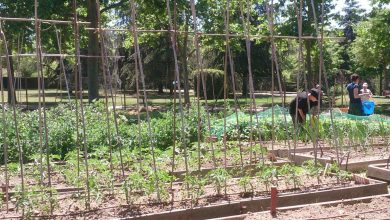
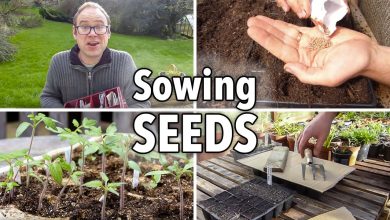
![Photo of Autumn Flowers: [Names, List, Care and Characteristics]](https://www.complete-gardening.com/wp-content/uploads/2021/06/flores_de_1589019104-390x220.jpg)